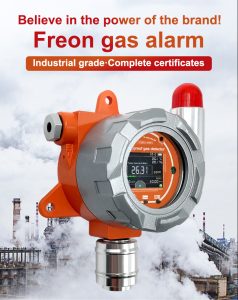Clean air is a fundamental prerequisite for healthy life, and air pollution is a leading cause of morbidity and mortality worldwide. Therefore, monitoring air quality is critical to safeguard human health and the environment. With the advent of state-of-the-art gas sensors, air quality monitoring has become more accurate and comprehensive, enabling us to detect various pollutants in real-time. In this article, we will discuss the significance of state-of-the-art gas sensors in advancing air quality monitoring, their advanced features, and potential applications.

Chapter 1: The Importance of Air Quality Monitoring
Air pollution has numerous adverse effects on human health, including respiratory and cardiovascular diseases, cancer, and premature death. It also has a detrimental impact on the environment, including biodiversity loss, climate change, and acid rain. Therefore, regular monitoring is vital to track pollutant levels, identify sources of pollution, and take effective measures to reduce emissions.
Chapter 2: Advanced Features of State-of-the-art Gas Sensors
State-of-the-art gas sensors offer several advanced features that make them highly efficient and accurate in detecting air pollutants. These features include:
a. Real-Time Monitoring: State-of-the-art gas sensors provide real-time data on various parameters such as NOx, SO2, CO, O3, and PM. This continuous monitoring allows for early detection of changes in air quality, enabling prompt response and prevention of potential health risks.
b. Remote Monitoring: Many advanced gas sensors are equipped with remote monitoring capabilities. This feature allows authorities to access real-time data from multiple locations, enhancing efficiency in managing air quality over large areas.
c. Multiparameter Analysis: These sensors can measure multiple parameters simultaneously, providing a comprehensive understanding of air quality. For example, they can detect the presence of volatile organic compounds (VOCs), which are harmful to human health.
d. High Sensitivity and Specificity: State-of-the-art gas sensors are highly sensitive, enabling the detection of low levels of pollutants. They also exhibit high specificity, meaning that they can differentiate between different pollutants.
Chapter 3: Applications of State-of-the-art Gas Sensors
State-of-the-art gas sensors have numerous applications in monitoring air quality. These applications include:
a. Urban Air Quality Monitoring: Urban areas are often characterized by high levels of pollution due to traffic, industry, and other anthropogenic activities. Gas sensors can monitor pollutant levels in urban areas, providing valuable information for decision-makers and promoting public awareness.
b. Industrial Emissions Monitoring: Industries produce emissions that require careful monitoring to ensure compliance with environmental regulations. Gas sensors can detect emissions from factories, power plants, and other sources, enabling more effective monitoring and control of pollution.
c. Indoor Air Quality Monitoring: Indoor air quality can have a significant impact on human health, especially in workplaces, schools, and homes. Gas sensors can detect harmful compounds such as CO and VOCs, enabling remedial actions to improve indoor air quality.
d. Vehicle Emissions Monitoring: Vehicles are a significant source of air pollution, contributing to high levels of NOx, CO, and PM. Gas sensors can detect emissions from vehicles, enabling authorities to enforce emissions regulations and promote the adoption of electric and hybrid vehicles.
Chapter 4: Integrati on of Gas Sensor Networks
on of Gas Sensor Networks
To maximize the benefits of state-of-the-art gas sensors, it is crucial to integrate them into comprehensive monitoring networks. Interconnected sensor networks allow for data sharing, collaboration among stakeholders, and centralized management. This integration enables a holistic approach to air quality management, improving response times and facilitating decision-making processes.
Chapter 5: Challenges and Future Developments
Despite their many advantages, challenges remain in the widespread adoption of state-of-the-art gas sensors. Some challenges include the initial cost of implementing sensor networks, ensuring interoperability among different sensor systems, and addressing issues related to data storage and analysis. Future developments should focus on enhancing affordability, expanding sensor capabilities, and improving data communication protocols for seamless integration.
Conclusion:
State-of-the-art gas sensors have revolutionized air quality monitoring by providing real-time data, accurate measurements, and remote monitoring capabilities. These sensors offer immense potential in improving the efficiency of air pollution management, promoting public health, and preserving the environment. By investing in advanced technologies and integrating gas sensor networks, we can work towards a sustainable future where clean and safe air is accessible to all.
 : +86 155 8830 2704
: +86 155 8830 2704 : jxdziot@gmail.com
: jxdziot@gmail.com
